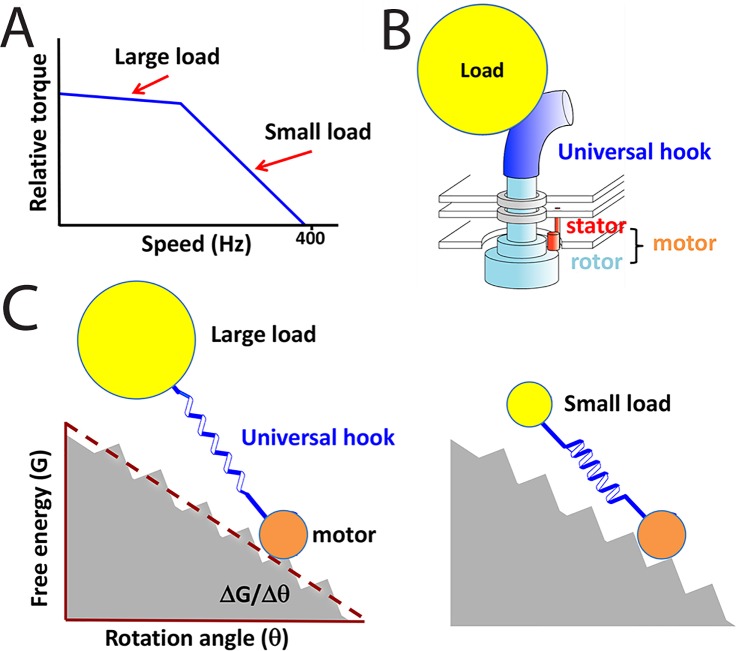FIGURE 2:
Simple theory explains torque-speed relation in BFM. (A) Experimentally observed torque-speed relation displays a sharp increase in the slope at a threshold speed. (B) In the experiments, the load was applied through the universal hook of the BFM, which acted as an elastic spring. (C) Illustration of the major conclusion of the model by Xing et al. (2006). The motor cycles can be illustrated as a particle moving down a rugged energy landscape. The elastic universal hook buffers the motion of large loads and results in a temporally averaged smooth free energy surface. For such sluggish loads (or equivalently for low speeds) the maximum torque is determined by the thermodynamic driving force, ΔG/Δθ. For small loads or at high speed, the buffering is weak and the resulting rugged landscape causes some of the mechanical energy from the motor to be dissipated directly as heat. This dissipation leads to a decrease in torque above ∼300 Hz.

